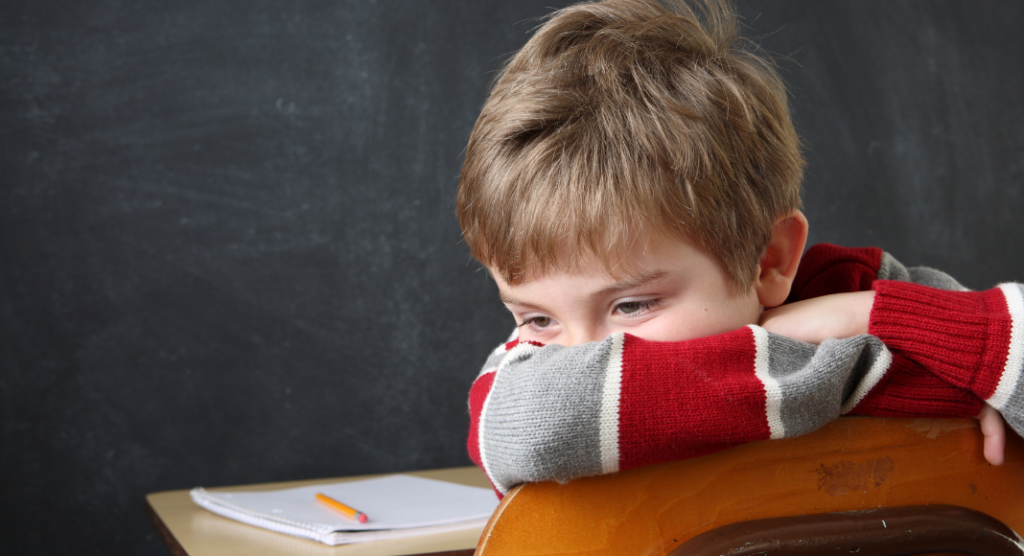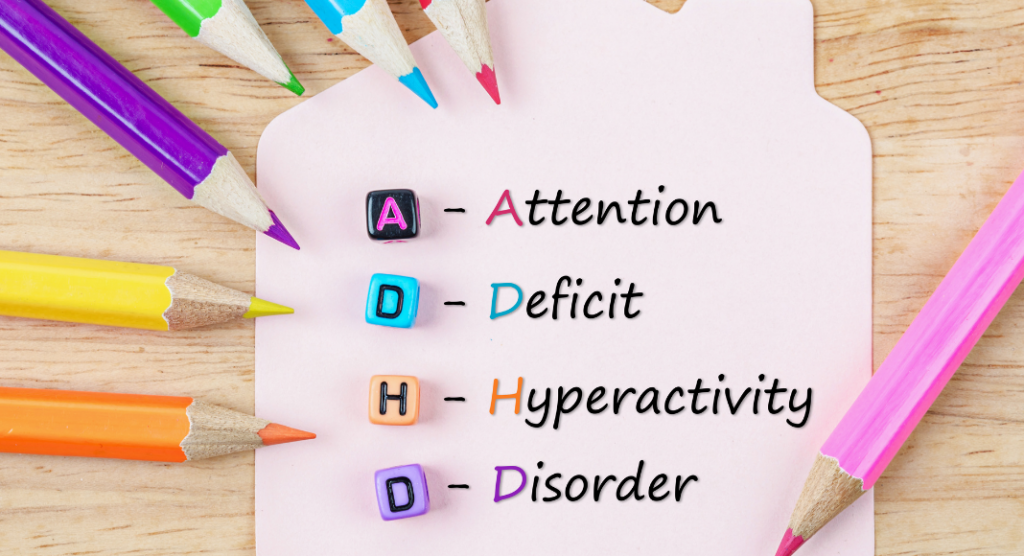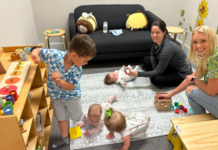 October is ADHD Awareness month. For our family, that doesn’t mean awareness that ADHD exists, or that our family is finding ways to thrive with ADHD. ADHD Awareness is more about recognizing what it is – it’s a difference in how the the brain of someone with ADHD works – and what it’s not.
October is ADHD Awareness month. For our family, that doesn’t mean awareness that ADHD exists, or that our family is finding ways to thrive with ADHD. ADHD Awareness is more about recognizing what it is – it’s a difference in how the the brain of someone with ADHD works – and what it’s not.
ADHD isn’t a bad thing. It isn’t something that you hope you don’t have to deal with in your child. It isn’t an immediate cause to medicate a person. So many people with ADHD discover strategies to help them and their families thrive with or without medication. ADHD Awareness, for us, is about a personal awareness of how it affects us, and how to better interact with friends and family that have ADHD, too.
ADHD used to be divided between ADD and ADHD, but recently it’s been recategorized as all ADHD with subtypes of inattentive, impulsive, and combined types.
It’s important to note that while many kids do fit the usual picture of easily distractible, high energy, chatterbox ADHD kid, not all children diagnosed with ADHD do. ADHD can look like the quiet daydreamer that just can’t seem to focus on the tasks at hand. It can look like the kid who just can’t sit still. And sometimes it’s the kid who can’t seem to get control of his impulses so he seems more aggressive, more angry, and just generally more emotional than his peers.
Our family’s journey with ADHD is perhaps a roundabout one. When our youngest son turned two or three, he went from being the idyllic happy going baby to a loose cannon of a toddler. Which really isn’t atypical, in and of itself.
But as he got older, his inability to control himself only seemed to get worse.
He had a hard time in preschool and kindergarten. He didn’t seem to have a good grasp on his impulses; there were no checks and balances between brain and action. He was not, and is not, a bad kid. He’s sweet and lovable and passionate about his topics of interest.
I know enough about ADHD from working in early childhood and my college psych classes to figure out that this was probably the challenge he was dealing with. We didn’t pursue a diagnosis at first, because he already had an IEP (Individualized Education Plan) for speech and writing, and for the most part, the therapies and interventions therein seemed to be enough to help him be successful.
And they were. Until somewhere in second grade, when we realized they were no longer enough.
We talked with his doctor, his teacher, and his therapists, and got an official diagnosis of ADHD impulsive type and tried medication. Full disclosure: medication, even a fast-acting stimulant, is a bit of trial and error with dosages and prescriptions. Finding the best fit is something we are still working on, but we can all tell a difference when he is taking his medication versus when he is not.
Medication didn’t, and shouldn’t, zombify your child or dull their personality. What we have seen is that it allows him to be his best self. He’s able to control impulses to hit, or kick, or run. His brain slows down enough that he can think about what he wants to say before he says it. He can focus. He can complete tasks. It’s not perfect; he’s still fully himself. Loves to be entrenched in video games or snuggle with the pets or run outside with his friends.
The major, unforeseen side effect to pursuing a diagnosis for our son, was realizing that our whole family is affected to some degree or another. After our youngest was diagnosed, my husband asked his doctor for an evaluation, and sure enough, he has ADHD also.
The same school year our youngest was diagnosed, we started noticing our daughter was also struggling, but in a different way. She has inattentive ADHD, which means she isn’t hyperactive, but struggles to maintain focus, is easily distracted, and needs help staying on task. She also has Generalized Anxiety Disorder, which is not uncommon to be paired with an ADHD diagnosis.
Though I was generally very successful in school and at work, I’ve always recognized ADHD as something I deal with myself, but I’ve never been formally diagnosed, and neither has our oldest son. Though I am hearing so much about a struggle focusing from his middle school teachers, that perhaps that is his next step.
So that’s all five of us, dealing with ADHD in different ways. Some of us are on prescription medication, some of us depend solely on alternative strategies. Each of us found a way forward that works best for each individual, and that path is not always straightforward.
The benefit to recognizing these traits in all of us is that it leads to so much better understanding of our kids and of us as parents.
I’m pretty sure it’s why I am not great at following through with rewards charts. That executive function piece can be a real challenge. It is not removing blame when our kids mess up. But if we can understand why they mess up, it can help them do better, and for us all to put in place measures to ensure greater success for all of us in the future.
 Here are some things that help our family cope with ADHD
Here are some things that help our family cope with ADHD
Lists
1. Chore lists that are as visual and visible as possible, including step-by-step breakdowns.
This means simplifying tasks: instead of “clean your room” our chore list needs to break down the tasks involved in what can be overwhelming directives. So clean your room becomes: pick up trash, put dirty clothes in the hamper, make the bed, put toys in bins, vacuum floor.
Spelling out the details gives us small wins, and helps big tasks seem more doable. For the adults, we have a shared ToDoList app on our phones with categories that we can both add to and check off.
2. Homework and Classwork lists
Homework and classwork can be broken down the same way. Instead of asking “Do you have any homework,” break it down by subject. Ask, “Do you have a math worksheet? Do you have a reading assignment?”
If your child’s teacher gives a week’s worth of homework at once (like a homework packet) find a way to break that up for your child. If your child has an IEP or a 504 plan, this is something that can also be asked of their teachers. Longer tests and assignments, when possible, can be broken up to be less overwhelming and more doable.
3. Shopping and wish lists
This is probably more for the ADHD adult, but I cannot shop without a list. I will forget something. And more trips to the store generally mean more money spent, and that’s bad for the budget.
For this reason, physical money or app trackers for money (like banking apps) are ideal to help us stay on top of everything. When we did back-to-school clothes shopping with our daughter, who is turning 10, we made a list. This helped us stay on track with needs versus wants when faced with all the options in the store.
Communication
We talk to the kids about how their brains work. We work hard to name emotions and own up to our own faults. Apologizing to our kids when we mess up models that behavior for them, humanizes us, and helps us all work better together in the future.
We talk about medication, checking in to see if they notice how it makes them feel. Does it make their heart race? Do they feel calmer when they take their medicine? Do they notice differences in how they speak or interact with their friends?
This serves a two-fold purpose. First, it helps us, as parents, know if the medication is having an effect on them – positive or otherwise – and second, it helps our kids recognize any signs that the medication is helping, because sometimes the differences are subtle.
Finding small tools to help
A friend once told me, it’s not that her child doesn’t want to be still, it’s that they literally CAN’T be still. Putting a child that can’t be still – their brain and body actively works against that skill – in situations where being still is imperative, puts them at an immediate disadvantage.
Sometimes an activity helps – like a fidget toy, or playing an electronic game, or reading a book. If these tools help your child do the impossible task of being still in situations where that’s expected, USE THE TOOLS. There’s no shame in it. Finding the things that work for you and your child is something that should be celebrated!
Whether you, your child, or someone you know is affected by ADHD, having an awareness of what that diagnosis means can improve your relationship, and give all of you better tools to manage and thrive both at home and at school.
Further ADHD Resources:
- My favorite website for learning more about this diagnosis is ADDitude
- Locally, both Lexington Mental Health and Richland County have resources, including therapists, that can help.














